Borag Thungg, Earthlets! If those words mean something to you, then congratulations — you are leading a good life. If not, then you owe it to yourself to pay attention. They are the words of greeting that Tharg the Mighty, the extraterrestrial editor of 2000AD, has spoken to the British sci-fi comic’s readers for the past 40 years.
And 40 years is right. 2000AD enters its fifth decade this year, and various celebrations have been planned to mark the occasion. Among them is an exhibition at the fantastic Cartoon Museum in central London, where 85 pieces of original artwork are on show for our delectation.
It’s an exhibition that does exactly what it should: show off the great variety of 2000AD. Plenty of space is occupied by the square shoulders and squarer jawline of the comic’s most famous character, the future lawman Judge Dredd, of course. But there’s also room for the Romanov rogue Nikolai Dante, the hulking barbarian Sláine, the girl-next-door (so long as next-door is space) Halo Jones, as well as for Ronald Reagan having his necksucked on by a bounty hunter with vampiric tendencies.
It’s not just the characters, but the art itself. 2000AD has always been home to diversely brilliant illustrators, many of whom are then snapped up by DC Comics and Marvel. And so, in one corner, the exhibition gives us Massimo Belardinelli’s precise, Kirby-esque compositions of Dan Dare battling the storms of Jupiter. While in another, it features Kevin O’Neill’s angular Nemesis the Warlock battling our very sanity. The chunky inkwork of Carlos Ezquerra is there alongside fully painted pages by Greg Staples. 2000AD has never really had a house style.
And yet every artwork in the exhibition still has something recognisably 2000AD about it. It’s more a house attitude:subversive, exuberant and uninhibited. The end result, for readers, is a happy version ofthe sensory overload, or ‘Future Shock’, that citizens suffer in Dredd’s Mega-City One.
This does, however, make the job of picking out highlights rather difficult. For me, the best bit was probably seeing a few pages by my favourite regular 2000AD artist Henry Flint. Other old-timers may thrill at Mike McMahon’s opening double-page spread from the final chapter of the Cursed Earth saga. Newcomers might enjoy how skilfully this exhibition reduces 40 years of comics into something that can be managed in a lunchbreak.
Some of the exhibition’s finest moments are almost accidental. Most of the artworks have speech bubbles, captions and corrections literally pasted on to them — because that is how comics are made. But only one has a crisps logo (KP Griddles) glued to its top, along with the promise of a free packet for those who follow the instructions later in the issue. It’s a reminder that 2000AD is a publishing operation. This is art for newsstand sales’ sake.
That’s no bad thing. In fact, it’s what makes 2000AD so astonishing. As the Cartoon Museum’s exhibition shows, this is art that deserves to be framed and admired, yet it was actually made to be combined with more art and words, processed into ongoing stories within ongoing stories, and somehow printed, without fail, on a weekly basis. Tharg the Mighty must be mighty indeed. Zarjaz!
Got something to add? Join the discussion and comment below.
Get 10 issues for just $10
Subscribe to The Spectator Australia today for the next 10 magazine issues, plus full online access, for just $10.

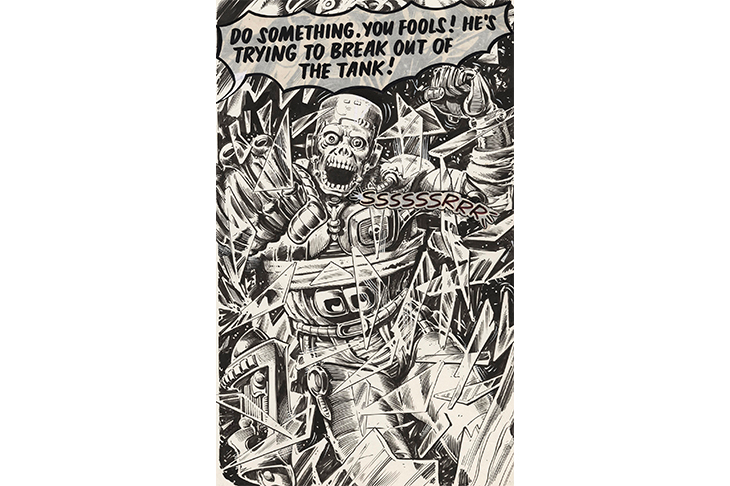
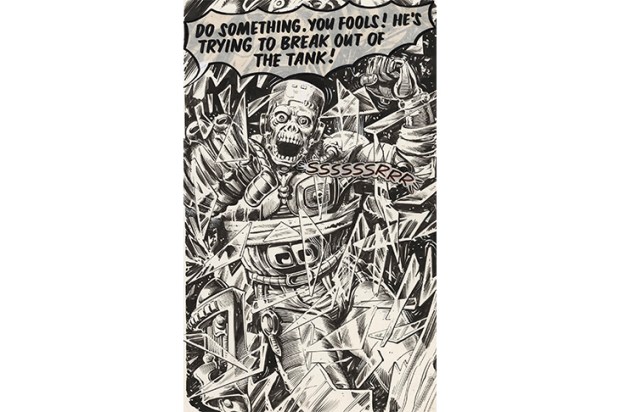
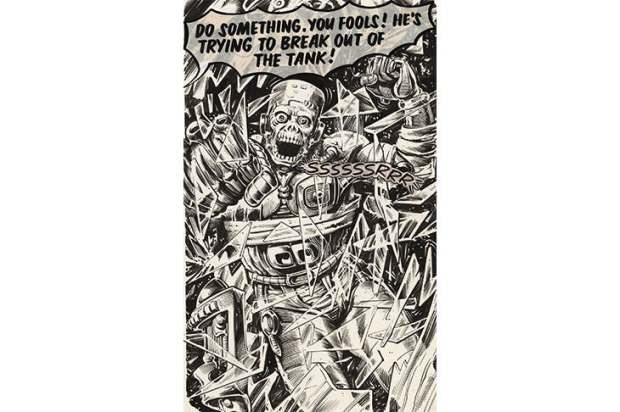
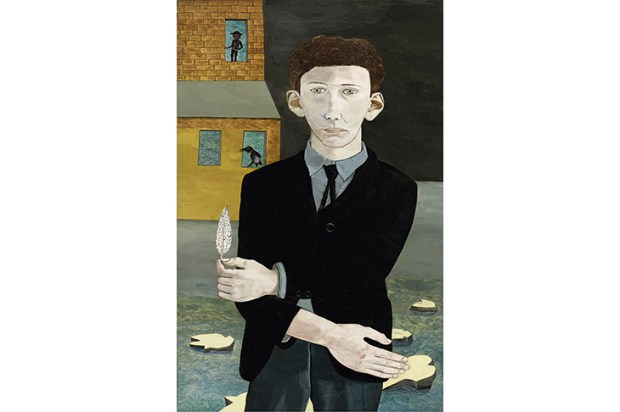
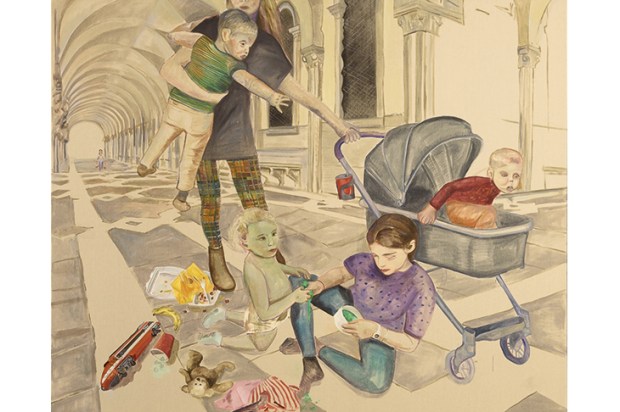
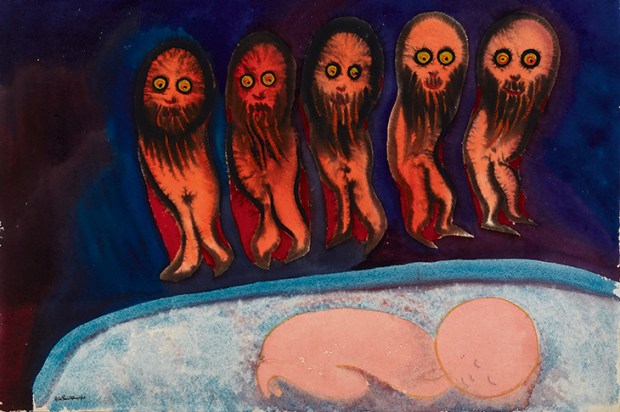






Comments
Don't miss out
Join the conversation with other Spectator Australia readers. Subscribe to leave a comment.
SUBSCRIBEAlready a subscriber? Log in